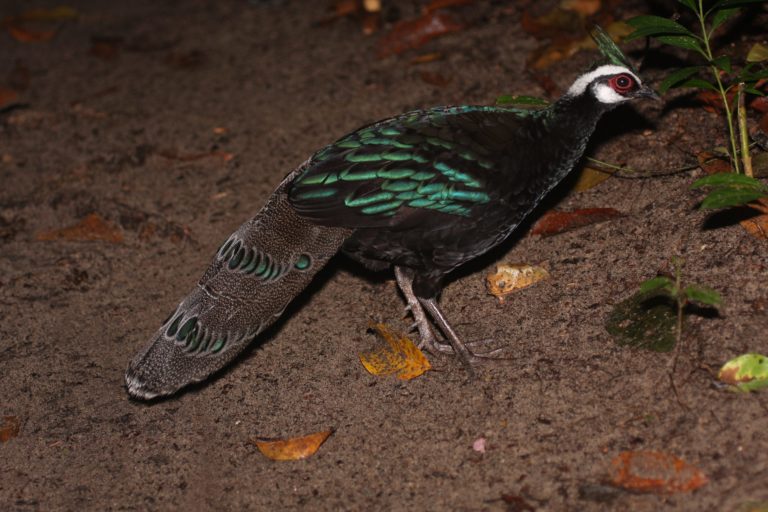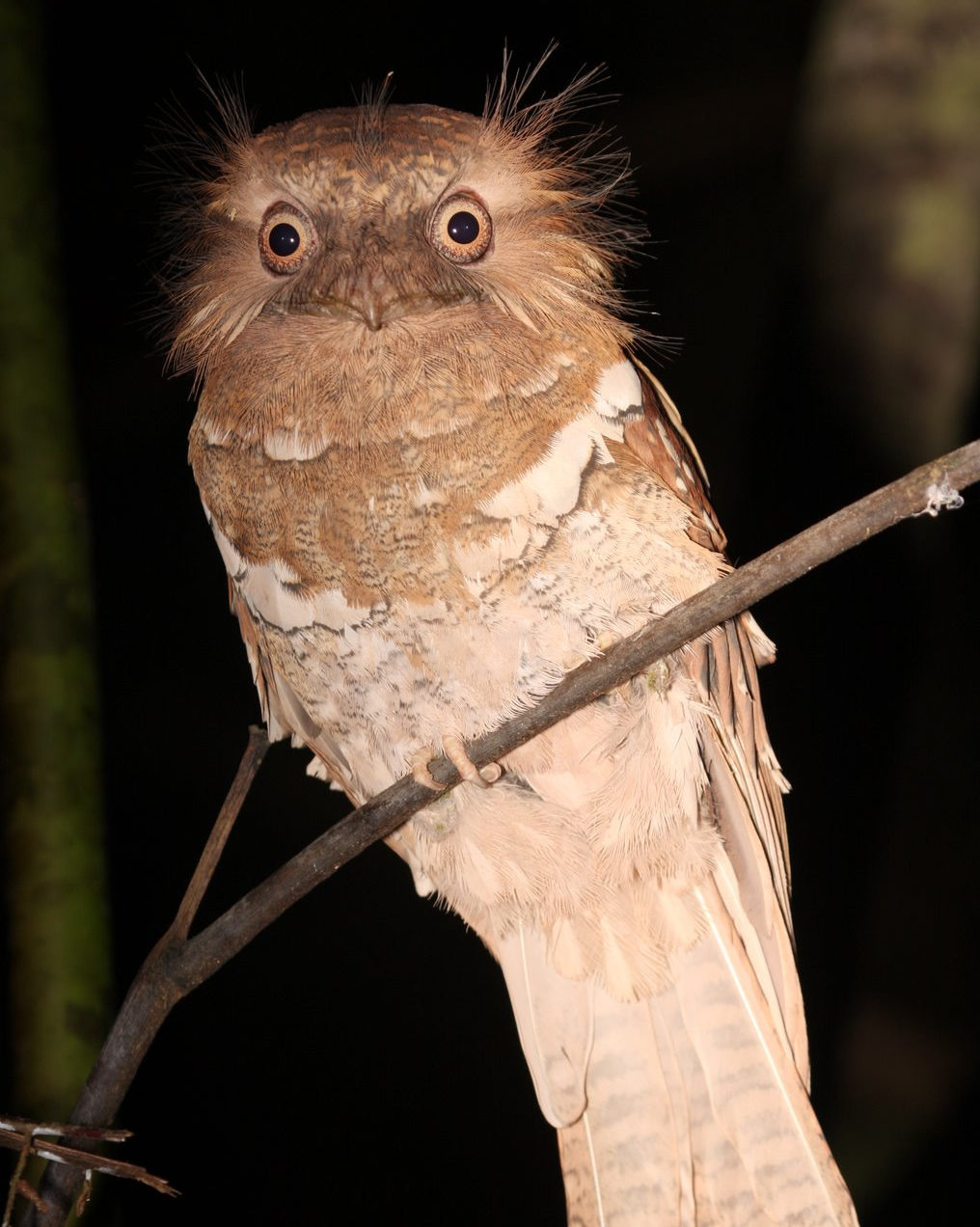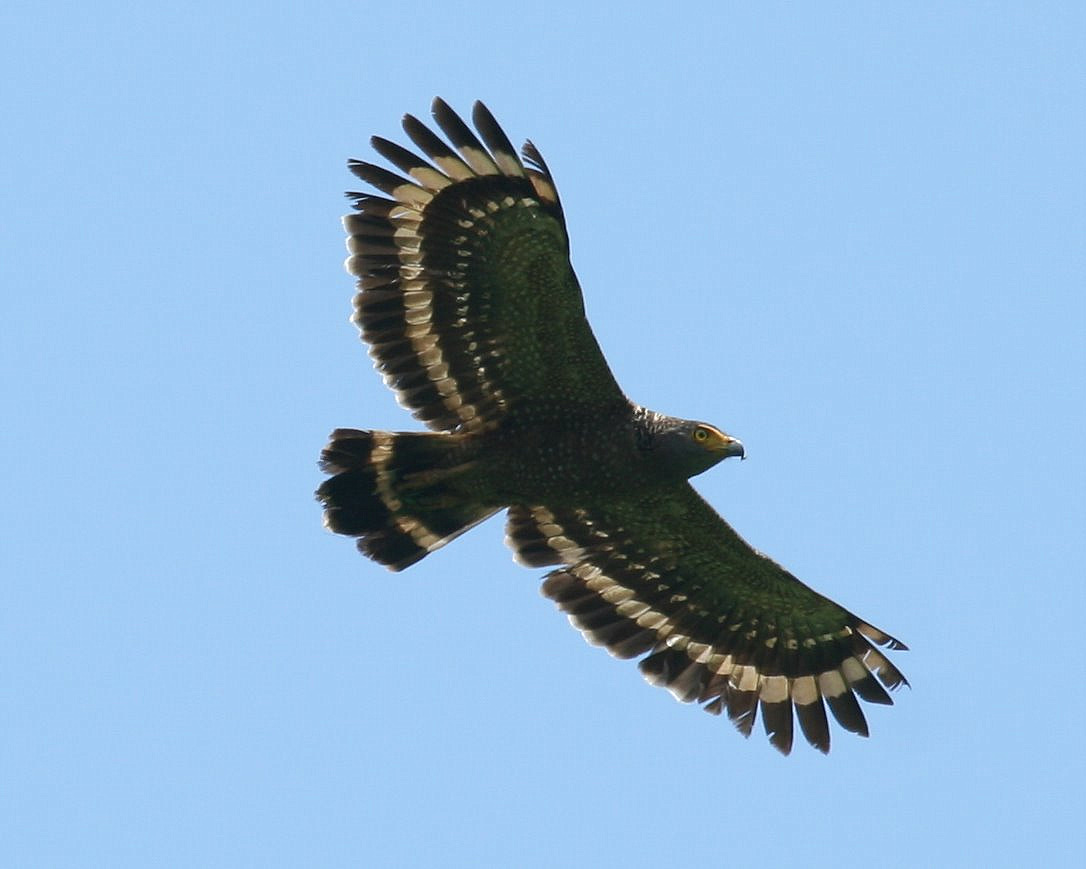- The Philippines supports extraordinary avian diversity: 86 new endemic bird species have been described in the country in just the last decade.
- Nevertheless, the country’s currently known 594 bird species depend on forests, grasslands and wetlands that are rapidly disappearing.
- A new study suggests that even more species are at risk than previously thought, finding 84 species are at greater risk than indicated by their current IUCN Red List status.
- Results also indicate that endemism, narrower elevational range, high forest dependency, and larger body size make it likelier that a species will go extinct.
The Philippines is made up of more than 7,000 islands, supporting an extraordinary number of species that occur nowhere else on the planet. Eighty-six new endemic bird species have been described in the Philippines in just the last decade — more than all avian endemics ever recorded in either China or India. Nevertheless, the country’s currently known 594 avian species depend on forests, grasslands and wetlands that are rapidly disappearing.
Overall, nearly one-sixth of Philippine birds are considered threatened on the IUCN Red List, and of those, more than 43% (40 species) are listed as endangered or critically endangered. The country has the eighth-highest number of globally threatened bird species, including hornbills, true owls, rare pigeons and Old World flycatchers.
But even more species are at risk than previously thought, according to a new study published in June in Frontiers in Ecology and Evolution. The research team, led by biologists from the University of Utah, thoroughly assessed the Red List status of 446 resident Philippine bird species by analyzing data stored in a massive database compiled from field visits, peer-reviewed studies, ornithology books, field guides, and BirdLife International.
They found that 84 species are at greater risk than indicated by their current Red List status, including 14 species that the authors say warrant globally threatened status, which range from vulnerable to endangered to critically endangered.
The study also looked at the effect of a range of ecological, biogeographical and life-history traits on avian extinction risk. Results indicate that endemism, narrower elevational range, high forest dependency, and larger body size heighten a species’ extinction risk.
“Our study provides a roadmap for not only which species may warrant heightened conservation attention, but which traits a species may have that can help inform if it may likely be more at risk of extinction,” Kyle Kittelberger, a doctoral candidate from the University of Utah and lead author of the study, said in a statement. “There is a pressing need to assess what traits make some species more at risk of extinction than others and to use this understanding to help inform conservation efforts.”
Among their findings are that the Luzon hornbill (Penelopides manillae), Philippine serpent eagle (Spilornis holospilus) and writhed hornbill (Rhabdotorrhinus leucocephalus), warrant heightened classification to vulnerable, endangered and critically endangered status, respectively. The latter two species should be focal conservation species, say the study authors. In addition, the Palawan peacock-pheasant (Polyplectron napoleonis), Calayan rail (Gallirallus calayanensis), and Philippine eagle-owl (Bubo philippensis) also require reclassification from their current status of vulnerable to endangered, the study says.

A decade in the making
Çağan Şekercioğlu, associate professor of biology at the University of Utah, told Mongabay he began working on this study more than a decade ago, when he was collecting field information on Philippine birds alongside his colleague, Navjot Sodhi, from the National University of Singapore. As a keen bird-watcher new to the Philippines, he said, he was astonished to sight 161 species he had never seen before over a period of just 13 days. Sodhi died in 2011, Şekercioğlu said, and the study remained in stasis, but not forgotten, for another decade. Determined that his friend’s work should not be lost, Şekercioğlu resolved to revise the study to bring it up-to-date.
There was a lot of information to update. Dozens of new bird species have been described in the Philippines during the intervening years, mainly as a result of genetic studies and taxonomic revisions that split parent species into multiple separate species. Many of these new species were immediately considered threatened due to small or restricted population sizes, and there is a chance that species are being lost before they are even described. Moreover, a number of formerly widespread species have become increasingly scarce.
“We wanted to highlight how many other threatened and near-threatened species there are in the Philippines that are currently being overlooked,” Şekercioğlu said. “Especially because the Philippines already has the third highest number of endemic species that are globally threatened with extinction, after Indonesia and Australia.”

The Red List in action
Şekercioğlu said that keeping track of species’ conservation status by updating the IUCN Red List is vitally important so that the limited resources and budgets available for conservation can be apportioned effectively. With nearly 600 bird species in the Philippines, 258 of them endemic, prioritization is necessary.
“If a species is considered less threatened than it is, then there is much less, sometimes zero, conservation action because people think it’s doing fine,” Şekercioğlu said. “Basically, it’s pretty much essential to save a species to know its conservation status.”
The Haribon Foundation, a Philippine-based NGO, is particularly concerned about the critically endangered Philippine eagle (Pithecophaga jefferyi), which has seen a rapid population decline over the last 60 years, largely due to extensive deforestation. Haribon is helping it by protecting conservation areas in Gabaldon, Nueva Ecija and part of the Central Sierra Madre Mountains. Other important conservation species include the rufous-headed hornbill (Rhabdotorrhinus waldeni), which is safeguarded through projects in Antique and Aklan provinces.
According to Gregorio E. de la Rosa Jr., conservation science and research manager at the Haribon Foundation, the basis of such conservation projects is the IUCN Red List status of species. The Red List brings people together under initiatives that focus and sustain conservation efforts, he said, and the information from the new study will help to update bird conservation strategies in the country.

Traits that affect risk
Globally, more than one in eight bird species are threatened with extinction. Agricultural expansion and intensification are the foremost threats to birds worldwide, impacting more than 70% of threatened species, according to BirdLife International’s 2018 “State of the World’s Birds” report. Other hazards include logging, which affects half of the world’s threatened birds; invasive alien species, impacting almost 40%; and hunting and trapping, which affects more than one-third.
In the Philippines, the number of threatened species exceeds the global average, but the drivers of decline are broadly consistent and underlie local bird extinction risk. The new study found extinction risk was strongly correlated with endemism, narrower elevational range, high forest dependency, and larger body size.
Nearly 90% of Philippine avian species live in the lowlands and more than 70% are dependent on forests. Deforestation for timber and agriculture has ravaged lowland forest cover in recent years. Between 2001 and 2020, the country lost 152,000 hectares (375,600 acres) of humid primary forest, according to Global Forest Watch. This represents a decrease of more than 3% in primary forest cover in 19 years. According to the study authors, if current patterns of habitat loss continue, they expect to see the numbers of birds that are threatened increase.
The researchers suggest that larger species are more at risk due to their slower life history, which limits population density and leads to slower recovery following disturbances. Larger animals also tend to be targeted for hunting and trade. In the Philippines, such targeted species include the Visayan hornbill (Penelopides panini), Philippine cockatoo (Cacatua haematuropygia), blue-naped parrot (Tanygnathus lucionensis), and Philippine serpent eagle.

Climate change looms
While the direct threat of deforestation is what has put most species at risk, climate change represents an emerging and increasingly serious threat, particularly for endemic species. Şekercioğlu said that montane forests, protected from human encroachment by their inaccessibility and steep terrain, are now succumbing to climate change. As forest plants and trees shift to higher elevations to cope with warming, bird species that depend on them have to keep pace. This cycle could spell extinction for many island endemics.
“As you shift up a mountain … the area of forest shrinks,” Şekercioğlu said. “In some cases with climate change, the mountain simply becomes unsuitable; it is too hot. So the entire mountain forest is gone and so are all the species living there: Extinct. Birds are now getting squeezed by more human pressure in the lowlands and then climate change and global warming is pushing them higher and higher and sometimes off the mountain.
“Many of the Philippine endemics are found only on one island, so basically if something happens to the forests of that island, and they go extinct on that island, they go extinct from the planet. So that is why endemic species are top priority.”
Conservation managers looking to protect such rarities are now faced with the challenge of planning with climate change in mind. “Ideally, you would have forest all the way from coastal mangrove forest to the mountain tops,” Şekercioğlu said, “to allow species, especially forest endemic species, the room to be able to move up to higher elevations or new places as climate change makes their current habitat unsuitable.” He said protecting habitats by recognizing the value of ecosystem services provided by biodiversity would be a good starting point.
Banner image: A Philippines endemic species, the writhed hornbill (Rhabdotorrhinus leucocephalus) warrants heightened classification to critically endangered, researchers say. This hornbill was photographed in a bird park in Germany by Olaf Oliviero Riemer. Image via Creative Commons (CC BY 3.0)
Citation:
Kittelberger, K. D., Neate-Clegg, M. H., Blount, J. D., Posa, M. R., McLaughlin, J., & Şekercioğlu, Ç. H. (2021). Biological correlates of extinction risk in resident Philippine avifauna. Frontiers in Ecology and Evolution, 9. doi:10.3389/fevo.2021.664764
Feedback: Use this form to send a message to the author of this post. If you want to post a public comment, you can do that at the bottom of the page.
